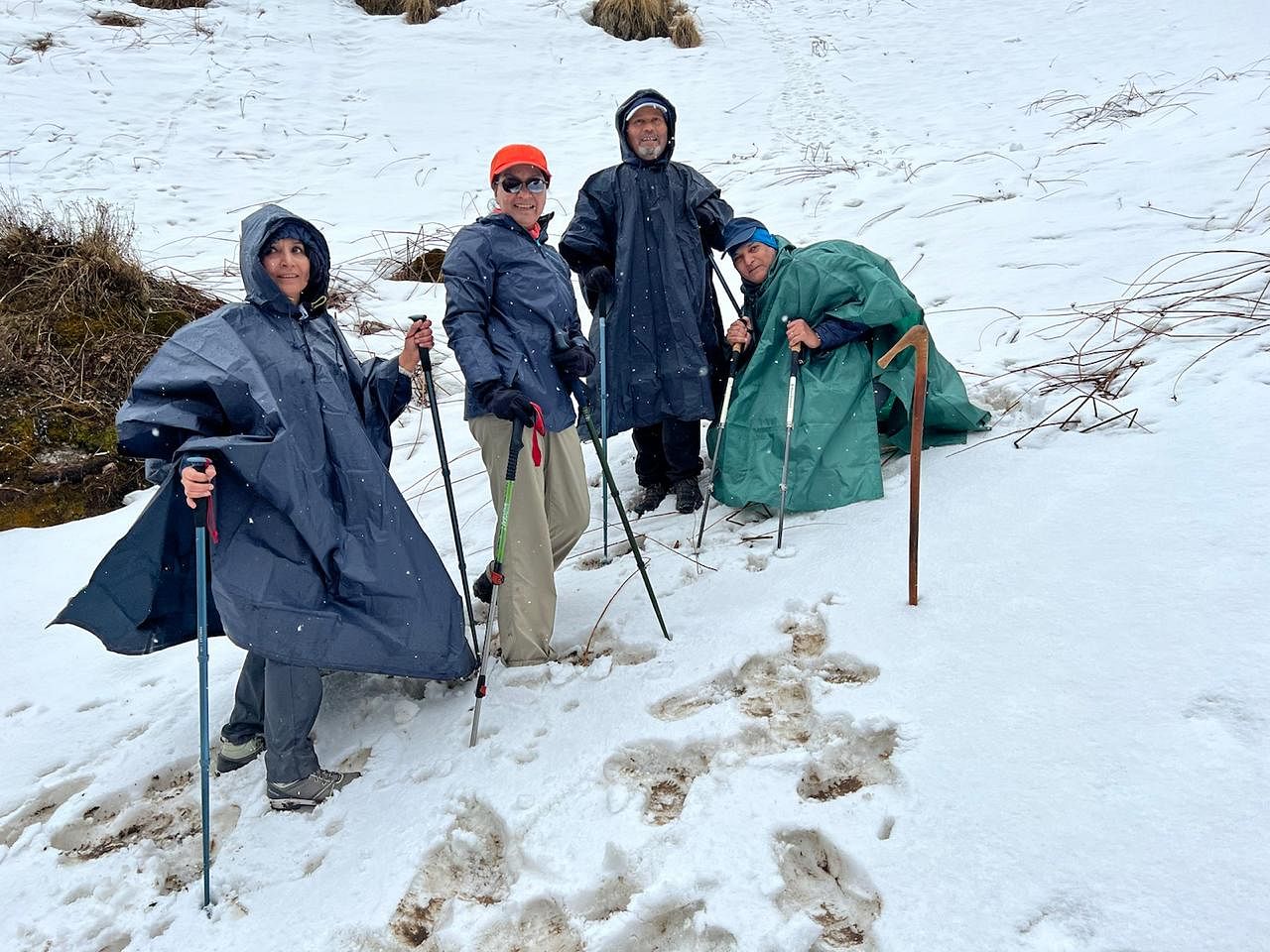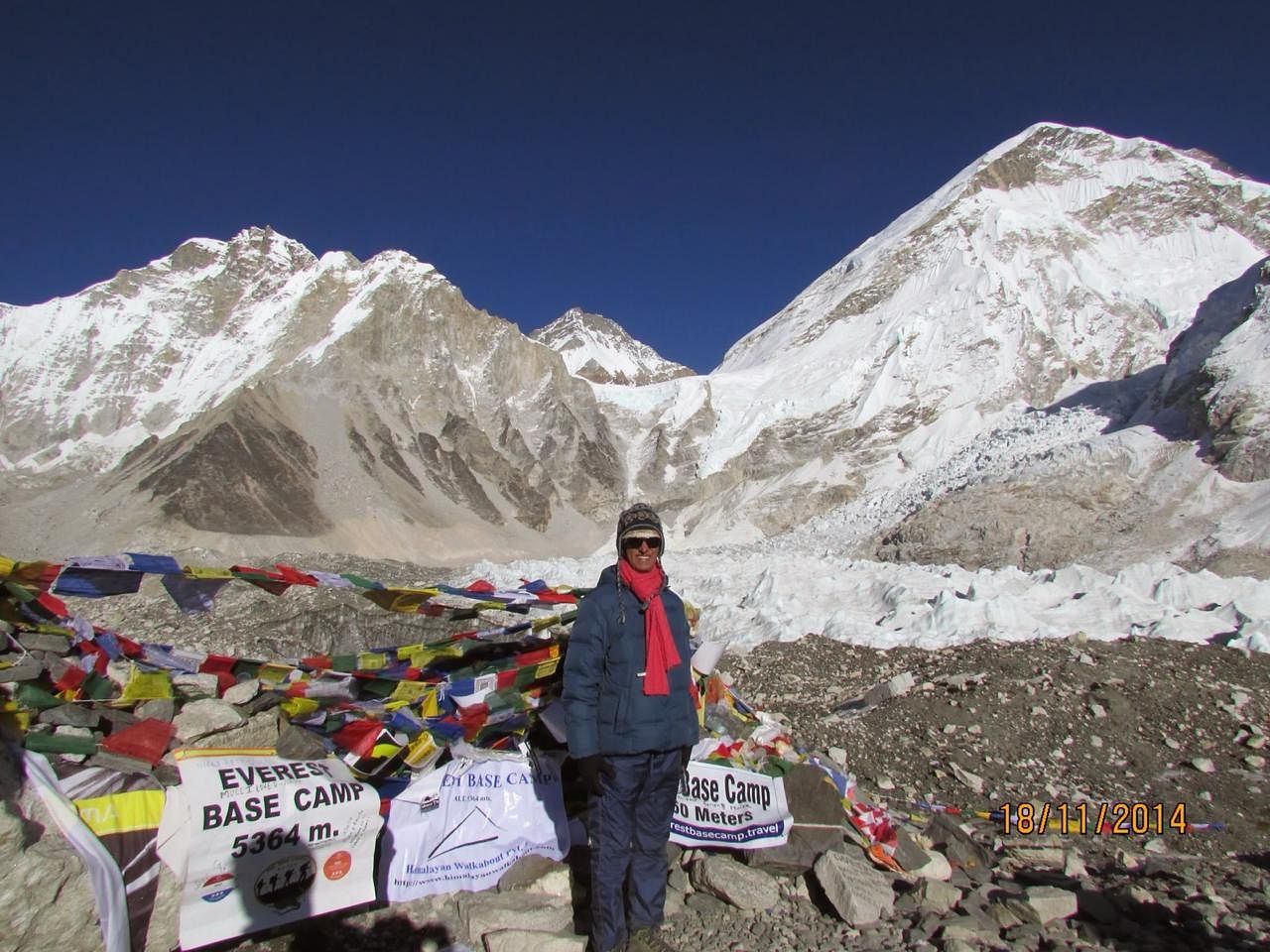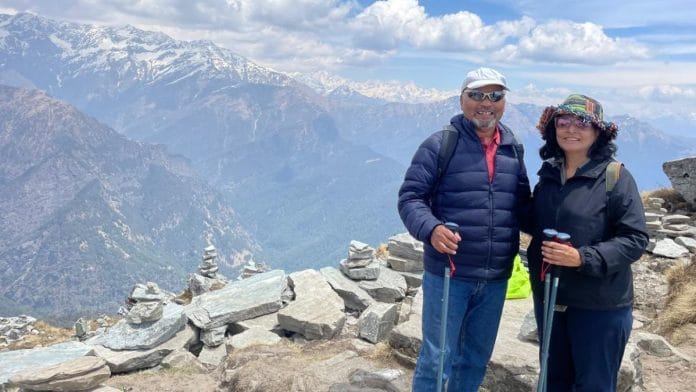New Delhi: Everyone in the group stared at Archana Bisht as they prepared to undertake the Chandrashila trek in Uttarakhand. A few even passed a snide comment about her age.
“But what do you know, I found the same people gasping for breath as I climbed up the mountain. At 60, I was so much faster than people half my age,” said Bisht, who has completed some of the more gruelling treks in the region, including one to the Bandarpunch base camp in Uttarakhand’s Garhwal Himalayas.
She’s part of the boomer generation in India that is redefining old age. And they’re doing it by scaling mountains and going on arduous treks in Nepal, Bhutan, Uttarakhand, Karnataka and Himachal Pradesh, among other places. Mountaineer Bachendri Pal, who became the first Indian woman to reach the summit of Mount Everest back in 1984 and continues to climb mountains at 70, is no longer an outlier. An increasing number of Indian women and men in their 60s and 70s are taking up trekking. Adventure and trekking companies have seen an uptick in recent years. Even Bollywood took note of the trend with the 2022 film Uunchai, starring Amitabh Bachchan, Boman Irani and Anupam Kher, in which they trek to the Everest base camp.
With time, the definition of ageing is changing—it’s more than just a number. “We look at the physiology of ageing. One could be diabetic, have hypertension, obesity etc at 35 while someone at 60 might be perfectly fine. We don’t look at ageing as a calendar concept, but in a dynamic way,” Dr Anil Gurtoo, New-Delhi-based doctor of internal medicine specialising in high-altitude medicine told ThePrint.
At 60, I was so much faster than people half my age
– Archana Bisht
Dr Gurtoo, also a mountaineer, added that with newer generations life expectancy will increase to 100, so fitness among those in their 60s must be encouraged.
“There’s no black-and-white answer to who can climb a mountain and who cannot. People with comorbidities such as hypertension and diabetes can also come, but a risk evaluation must be done, and on the basis of their physical fitness, people could determine the altitudes that they could climb to,” he said.
The 3 June tragedy, where nine people out of a group of 22 died at Uttarkashi’s Sahastra Taal trek when they were caught in a snowstorm, is a reminder of the risks of this ‘hobby’. Among the victims was a 71-year-old woman. The higher age range of the trek raised many eyebrows about senior citizens trekking on such difficult terrain.
“Age is not the reason behind casualties on mountains. Age gets attention because media gets fixated on it. Most accidents and deaths in the mountains are people going too high too fast and not being adequately prepared physically or mentally for the mountains,” said Gurtoo.
A poor trekker-to-guide ratio and shorter itinerary were some of the reasons cited for the mismanagement of the Sahastra Taal trek, which resulted in disaster. But these shortcomings can be fixed.
“With the right itinerary and other factors in mind, nothing should stop a senior citizen from putting on their trekking shoes and heading for the Himalayas,” said the founder of a leading trekking agency that organises treks for senior citizens as well.
Also read: How Uttarakhand trekking turned adventure into tragedy—cost-cutting, scant resources
‘Makes me feel young’
Sixty is that psychological mark, the age of retirement. Seniors are constantly under pressure to gracefully recede from the public eye and retire. But these mountaineers and trekkers are questioning this view. They have the time, and the discipline to maintain a healthy lifestyle—it’s all that’s needed to undertake arduous treks. What’s more, they have patience and awareness of their limitations.
“Older adults have always travelled a lot. It is a fallacy that life is over once you’re 60, you have to give up certain things. You don’t lose your physical or mental faculties because one day you’re 59 and the next you’re 60,” said Guneet Puri, co-founder of Bohemian Adventures, which organises treks for senior citizens.
For most, it’s more than just a need to cope with the empty nest, it’s a way to challenge themselves, keep fit and reconnect with nature.

“It makes me feel so young,” said Bisht from Dehradun, who has completed the Hampta Pass trek at Spiti and the Valley of Flowers among others. She and her husband are fit and look like they can outrun people half their age. But they’re not here to win any races. It’s a slow and steady climb to the top.
There’s no black-and-white answer to who can climb a mountain and who cannot. People with comorbidities such as hypertension and diabetes can also come, but a risk evaluation must be done
– Dr Anil Gurtoo, doctor specialising in high-altitude medicine
“There’s a huge sense of accomplishment once I reach the top of a mountain,” said Bisht, founder of 1-to-1 Help, which provides mental well-being services to corporate employees. But age has not dulled her competitive spirit. “I see people significantly younger than me fight for their breath along the way,” she said.
Inclusivity is easy
With demand from this age group rising, trekking and adventure companies have become inclusive of the needs of senior citizens. From the Valley of Flowers to Everest base camp, there’s no place that’s too far for senior citizens.
India Hikes, one of the largest such platforms in India, organises special treks for people above the age of 58. Others like Bohemian Adventures accept senior citizens after health checks certify them as fit.
“We don’t have an altitude cut-off for senior citizens. During our conversational process, we ask them questions to gauge their fitness levels, and enquire about their health issues, and the places they have previously trekked to or been to,” said Puri. “If a senior citizen who has been a mountaineer asks for a trek at an altitude of 4,000 or 5,000 metres, we won’t refuse.” As a safeguard, Bohemian Adventures maintains a client-to-guide ratio of 2:1 when organising treks for older age groups.
Sangita Bhattacharyya who founded 50+ Voyagers Travel and Adventure Club back in 2014 often includes adventure sports like scuba diving, sky diving and trekking in the itineraries.
“A senior citizen of 80 years of age just completed a day-long hike to Tiger’s Nest in Bhutan with us. When we go to Meghalaya, we also organise hikes to the living root bridges in Nongriat,” said Bhattacharyya.
Age is not the reason behind casualties on mountains. Age gets attention because media gets fixated on it.
– Dr Anil Gurtoo, doctor specialising in high-altitude medicine
But she admitted that India’s adventure tourism sector is not exactly senior citizen friendly, an approach that needs to change.
“In Lakshadweep or the Andamans, those above a certain age are not allowed to scuba dive. But there are no such limitations in neighbouring countries like Sri Lanka, Malaysia, Maldives,” she added. “We should understand that life doesn’t end at 50.”
Also read: ‘Indians willing to bargain lives for cheap treks’—trekking companies have no govt oversight
Rediscovering mountains, overcoming fears
As a Boy Scout in school, Alagu Balaraman would go on hikes and treks in the hills on the outskirts of Bengaluru where he grew up. But he left the mountains behind as he became a career-driven professional taking care of his family. Between home and office, there was hardly any time to even think of camping in the mountains.
That is, until his daughters grew up, and a camping trip in Uttarakhand unlocked the vault of memories. That was 20 years ago.
“We had gone for a camping trip to Sattal in Nainital. I met people organising treks and young people coming to discover mountains. That’s when I realised I am not as young as I used to be, and started training again,” said Balaraman, who is now 62.
He trains six times a week—a mix of yoga, cardio and strength training. “Some days I work out twice a day.”
His rediscovery of the mountains helped him detach from the world. In the valleys of the Himalayas, there is no network, and in the early 2000s, there was no way to make or receive calls.
With the right itinerary and other factors in mind, nothing should stop a senior citizen from putting on their trekking shoes and heading for the Himalayas
– founder of a trekking agency
Other senior citizens who are avid trekkers have similar experiences. Hemant Joshi (73) from Mumbai never got the time to scale mountains until he retired at 60. But just one trip to Leh was enough to kickstart his passion.

“The magnificence and serenity of the mountains, breathing in its pure air, was both calming and exciting. And it was the beginning of a love for the mountains and many more treks to come,” he said. Joshi continues to scale mountains even today.
For most senior citizens, this is more than just a hobby. It gives them a sense of purpose and achievement and strengthens their bonds with their partners as they trek together. It is an exercise that binds them even closer to each other. Couples work together to overcome their fears and help each other when the going gets tough.
Bisht regularly treks with her husband, 67-year-old Anil Bisht, who has a crippling fear of heights. When going up the mountains, he needs someone to hold his hands–and Archana is always there, by his side.
After building a company together and successfully running it for years, they relocated from Bengaluru to Dehradun to be closer to the mountains.
Recently, on a trek to Chandrashila, Anil refused to climb any higher because of his fear of heights. “Psychologically, people who are afraid of heights feel like they’re being called out by the gap, they almost feel like jumping, so one has to be empathetic of the situation,” said Archana.
Whenever there’s a ‘sheer height’—a steep point from where the valley is fully visible—Archana said Anil usually holds her hand, or the hands of the guide and faces the mountain in order to pass the area. “But we need to know when to stop, we have to be acutely aware of our capabilities, as well as our limitations.”
Also read: The world’s most famous headstand in 1951 was by a teacher on the snow-capped Himalayas
Go up slowly
On a trek in Uttarakhand, about five years ago, Balaraman and his wife slowly and steadily went up the mountains, taking time to observe the rustling of leaves on the trees, the sparkle of the water in streams, and the bees buzzing around the flowers. On the other hand, their younger colleagues raced up the mountain, hungry for the view from the top.
“When we caught up with the group, I asked them what they thought of the orchids, but they had not even seen them. When you’re younger you are often in a hurry,” said Balaraman.
Senior citizens on treks prefer to take their time—it’s also a way to allow their bodies to adjust at higher altitudes.
“We don’t want to tire ourselves out. Often, we pass people who overtake us at the beginning of a trek because they get short of breath, and also find it difficult to get used to the altitude,” said Archana. She and Anil always go in smaller groups and ensure that they have a guide dedicated to them. “We’re older now, we don’t mind spending the money,” she added.
Most seasoned trekkers have also identified what works for them. Joshi, for instance, prefers a mixed group so he can meet people from varied backgrounds with different worldviews.
The thrill of the climb never fades.
And when it comes to the inherent danger of trekking, Balaraman is quick to point out that cities can be just as dangerous, if not more.
“You’re more likely to get hit by a car and die in the traffic of Mumbai and Bengaluru. We have a false sense of security in the cities.”
(Edited by Theres Sudeep)






